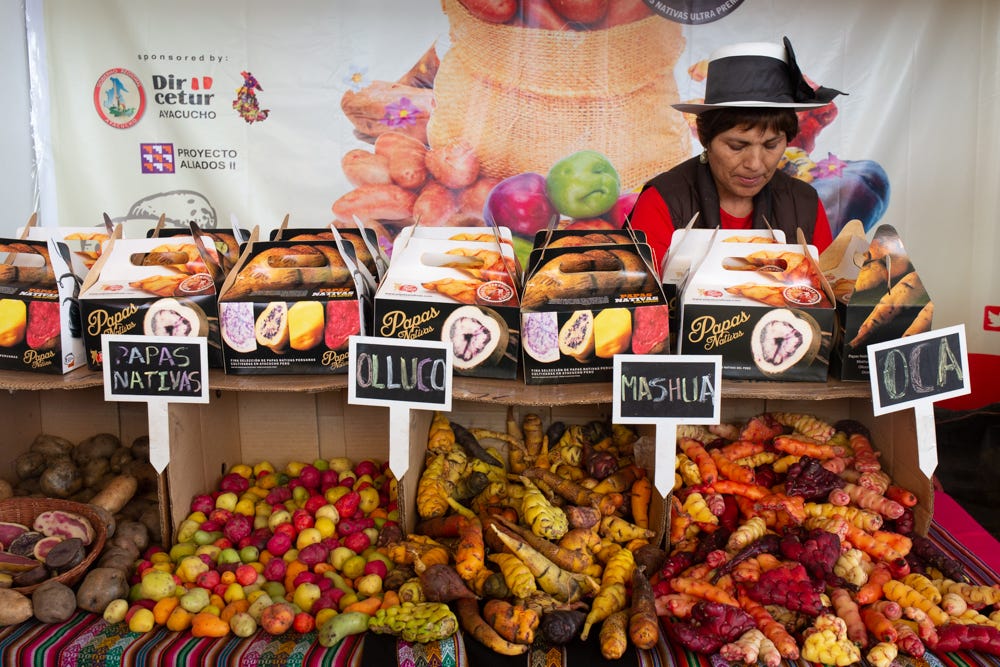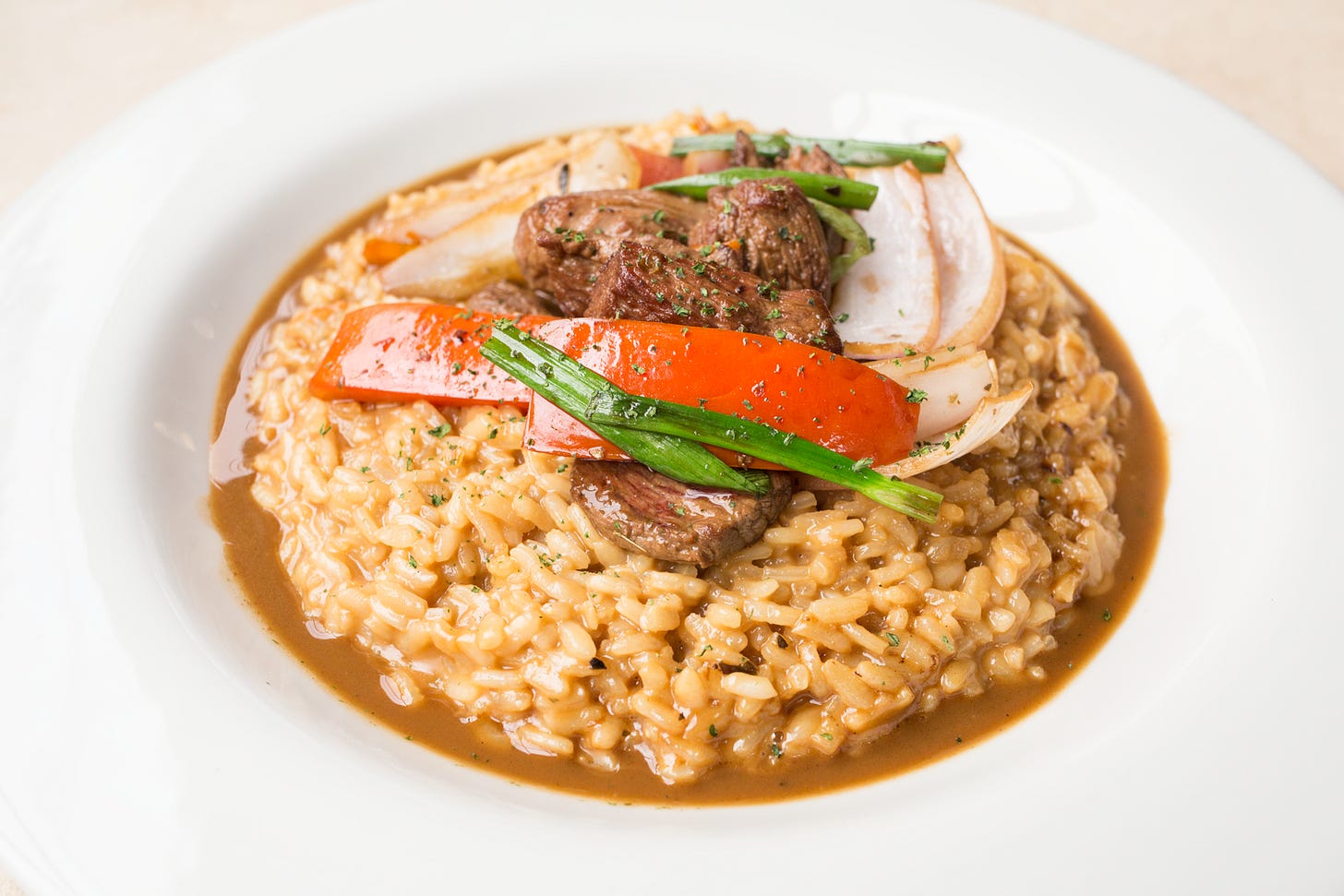My Fascination with Lomo Saltado
A look back at my first favorite Peruvian dish
I’ve written a lot about ceviche, but this time I’ll be turning the focus to my first favorite Peruvian dish-Lomo Saltado.
First, a bit of context—a little more than six years ago, I was in between jobs and ended up learning about Peruvian food while spending time in two different restaurant kitchens in Cusco. During the weekends, the family I was staying with would teach me about Peruvian home cooking as we cooked for large parties where all of the family members were invited.
Here’s a video that will give you a peak into the Lomo Saltado at the second restaurant I worked in:
My first task was to sort potatoes. Simple enough except in Peru there are two thousand types of native potatoes, and these potatoes looked the same to me. Peruvian pop music blared in the background. The lyrics were just now beginning to make sense to me, but I had to focus on the heap of potatoes in front of me. In the corner of my eyes, I could see tall flames flicker every few seconds. That was my first brush with Lomo Saltado, a dish would draw me into Peruvian cuisine.

What is Lomo Saltado?
Lomo Saltado is a stir-fry dish consisting of lomo (beef tenderloin) stir-fried with red onion, ají (Peruvian pepper), tomato, cilantro, soy sauce, and French fries.
For me, Lomo Saltado is a perfect representation of Peruvian cooking. It is a perfect example of the fusion that is the heart of Peruvian cuisine. It brings together diverse flavors and ingredients from multiple continents, but it’s such a staple dish that it is not considered fusion anymore. You can find it on the menu at pretty much any restaurant in Peru serving criollo (traditional) food.
Back to the story …
Just two weeks earlier, I was a simple turista-I cooked a lot at home but was a fish-out-of-water in a restaurant kitchen and didn’t know Spanish beyond a friendly “hola”. With my friend’s translation help and a gift of a Costco-sized jar of vitamins, I found myself in an apron, helping prepare vast quantities of unfamiliar food to a discerning local crowd.
Lomo saltado became my rite of passage. After two months of prepping veggies and managing not to cause any culinary crises or international incidents in the kitchen, I was taught to cook this classic dish-literally a trial by fire. In the restaurant, the beef is stir-fried in a dramatic fashion with high heat. With the flames six inches from my face and my eyebrows still intact, I plated my first Lomo Saltado. It had the perfect balance of savoriness and tartness that characterizes a good Lomo so I declared victory, and it sent was sent to a paying customer.

On weekends, I would continue to learn by cooking with my host family. Everyone from young to old would pitch in. On my last day, in a rustic kitchen set in the Sacred Valley, where the Incans once ruled, we prepared enough Lomo Saltado to feed thirty people. Inspired by Pisco, I decided to introduce the menu by using my two months’ worth of Spanish in front of a house full of Peruvians.
If someone told me ten years ago that one of my favorite dishes would have french fries and soy sauce, I’d be a little perplexed, but when you’re trying Lomo Saltado for the first time, you’re not thinking about that. That’s the magic of Lomo Saltado. There are variations from restaurants to restaurants and from household to household, but the essential textures, flavors, and presentation simply works.

Nowadays, I eat a bit less meat than I used to (for no particular reason), but Lomo Saltado makes it back into our routine when Mariela reminds me that we’ve been eating fish for the last ten days and we don’t want to become anemic.
Since we only have it occasionally, if we’re going to have Lomo Saltado, now we make sure to make it counts. For me, the difference between an okay and a great Lomo Saltado depends on the quality of the meat and the complexity of the sauce. I like my Lomo Saltado with a bit of vinegar. It adds contrast and brings out the flavors of the other ingredients. I also like the French fries mixed so that I can savor all of the flavors of the sauce, but that’s a bit of a personal preference.
Here’s a Lomo Saltado that we really enjoyed at Cumpa, a new restaurant in Surquillo, recently. It typifies all of the criteria for a good Lomo Saltado that I mentioned above.
I love how you can be at a restaurant like Cumpa and see flames flicker in the corner of your eye and you just know what the table next to you is going to be enjoying. For me, these flames symbolize the passion that underlies Peruvian cooking.
Special thanks to the Montesinos, Cordova, Suarez, and Campos families for introducing me to Peruvian home cooking and to Chef Sebero Luera Salinas and Richard Salas for hosting me in their kitchen at Inka Grill. Also, thanks to Chef Erick Paz Gallegos for allowing me to sit in his cooking class. Many thanks to Daryl W for producing the video below.




